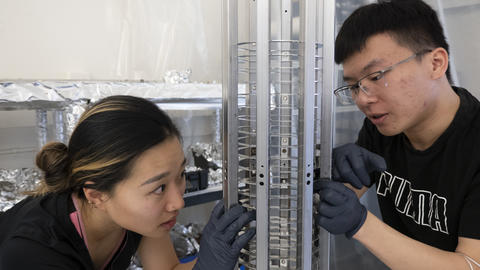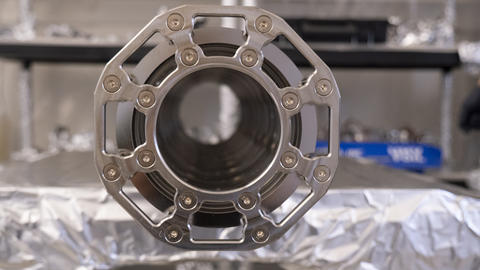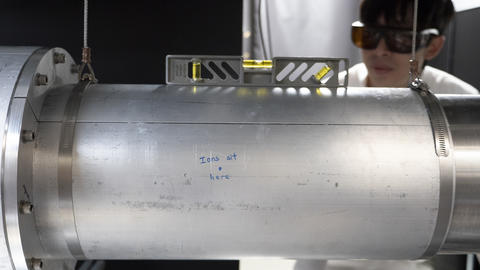
Gone are the days of bucket brigades for firefighting — long lines of people passing buckets of water one at a time toward a blaze — but NIST/JILA researchers found inspiration in that Wild West concept.
Meet the bucket brigade for atomic physics, an instrument built in sections that each serve as a bucket to trap charged molecules (ions) with electric and magnetic fields. The sections work together to send the ions along a meter-long conveyor belt for study.
With it, the research team plans to measure the roundness of the ions’ electrons, or how symmetrical the poles on either end of the electrons are (aka the electron dipole moment). If electrons aren’t perfectly round, it will change current theories about the creation of our universe and the amount of matter and antimatter that existed immediately after the Big Bang.
The project is in its infancy, and the instrument shown here is a baby version. While this bucket brigade extends along one meter, the team expects to make a longer one (10 meters or so) that can house even more ions in the future.
Stay tuned for more! In the meantime, find more details about the JILA project.


Follow us on social media for more like this from all across NIST!

